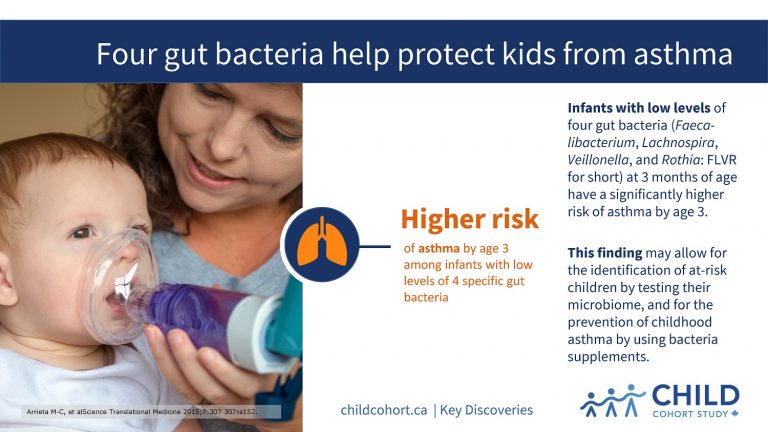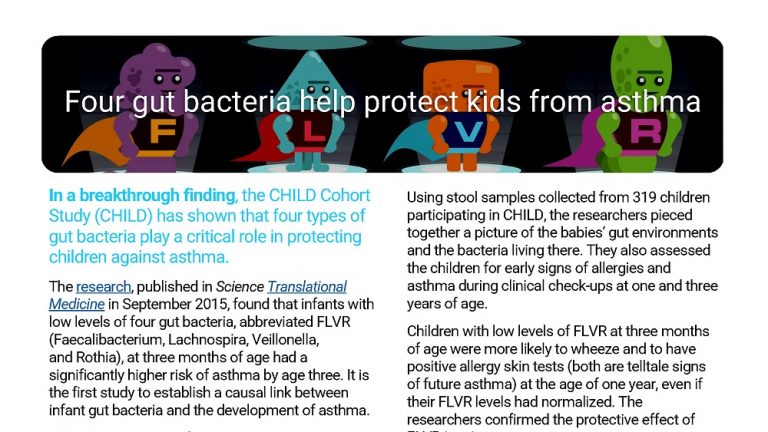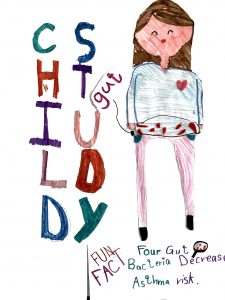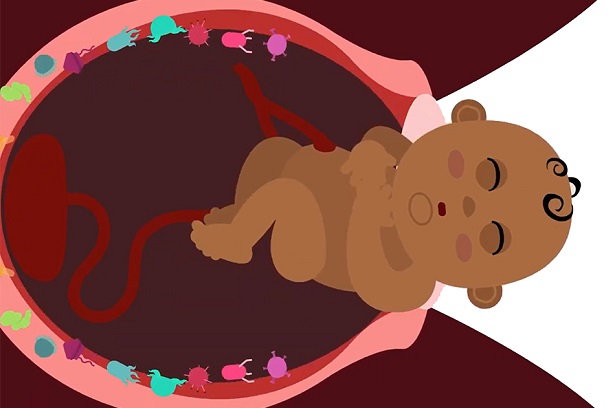Four gut bacteria help protect kids from asthma
In a breakthrough finding, the CHILD Cohort Study (CHILD) has shown that four types of gut bacteria play a critical role in protecting children against asthma.
The research, published in Science Translational Medicine in September 2015, found that infants with low levels of four gut bacteria, abbreviated FLVR (Faecalibacterium, Lachnospira, Veillonella, and Rothia), at three months of age had a significantly higher risk of asthma by age three. It is the first study to establish a causal link between infant gut bacteria and the development of asthma.
CHILD Co-Director and CHILD Vancouver site leader Dr. Stuart Turvey (The University of British Columbia, BC Children’s Hospital) and CHILD investigators Dr. Brett Finlay (The University of British Columbia), and Dr. Marie-Claire Arrieta (University of Calgary) led the research.
A NEW WAY TO PREVENT ASTHMA
Most infants acquire the FLVR bacteria naturally from their environment. However, some babies are not exposed to them for various reasons, including cesarean-section delivery and exposure to antibiotics, which disrupt the normal composition of gut bacteria, the researchers said.
“This discovery is exciting because it emphasizes the importance of the gut microbiome in asthma and opens the door to a whole new way to prevent childhood asthma by supplementing these specific bacteria in the first 100 days of life,” says Dr. Turvey.
Using stool samples collected from 319 children participating in CHILD, the researchers pieced together a picture of the babies’ gut environments and the bacteria living there. They also assessed the children for early signs of allergies and asthma during clinical check-ups at one and three years of age.
Children with low levels of FLVR at three months of age were more likely to wheeze and to have positive allergy skin tests (both are telltale signs of future asthma) at the age of one year, even if their FLVR levels had normalized. The researchers confirmed the protective effect of FLVR in mice.
WORLDWIDE ATTENTION
The study quickly grabbed worldwide attention, generating over 400 headline stories within 24 hours, including TIME, The Globe and Mail, and the CBC.
The FLVR discovery opens up the possibility of identifying children most at risk for developing asthma by testing their microbiome in the first three months of life. Those children could be monitored closely and treated quickly if they showed signs of asthma. It also opens the door to developing FLVR probiotic treatments to prevent asthma in the first place.
“We received emails from families affected by asthma thanking us for this work,” says Dr. Turvey. “We believe this outpouring of gratitude attests to the burden asthma places on families. People are eager for anything that might help – even bacteria.”
Video excerpt from “The CHILD Cohort Study and a baby’s microbiome“






